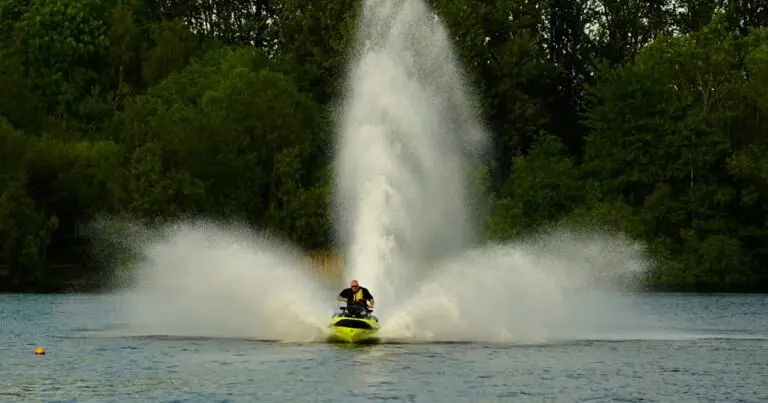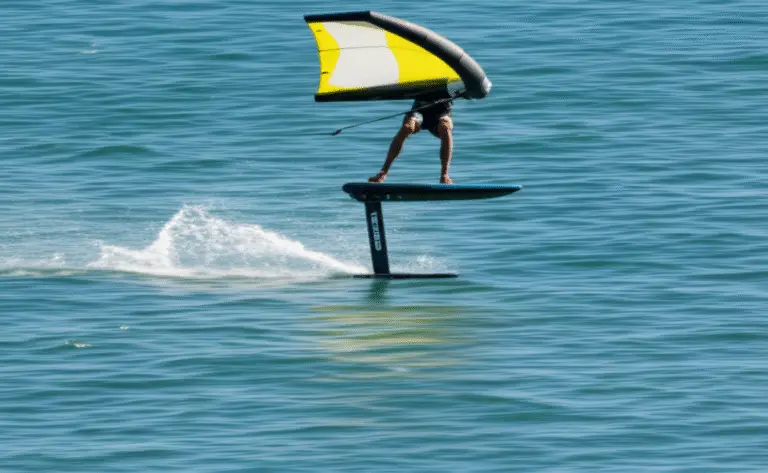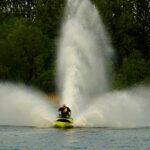Support our hydrofoil educational content for free when you purchase through links on our site. Learn more
How Does a Foil Board Work? 🏄♂️ Unlocking 8 Secrets of Hydrofoil Flight (2025)
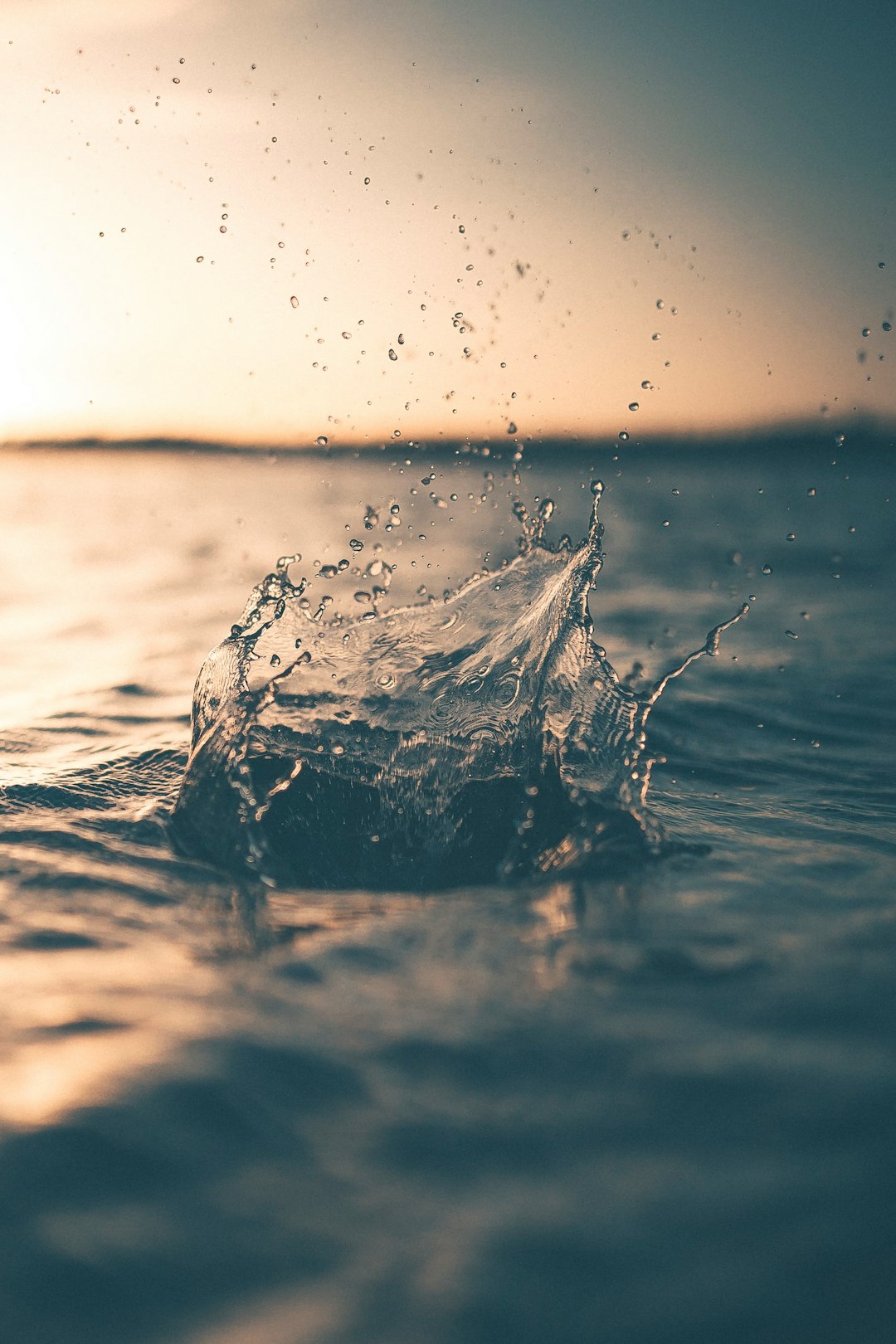
Ever wondered how surfers magically glide above the water, seemingly defying gravity? That’s the magic of a foil board — a game-changer that transforms traditional surfing into a breathtaking flight over waves. Whether you’ve seen those sleek hydrofoils slicing through ocean swells or caught wind of the latest wing foiling craze, understanding how a foil board works unlocks a whole new appreciation for this cutting-edge water sport.
In this article, we’ll unravel the science behind hydrofoil lift, break down the key components of the foil system, and explore 8 exciting ways you can ride — from surf foiling to powered e-foiling. Plus, we’ll share insider tips from Hydrofoiling™ pros to help you master the art of flight safely and confidently. Ready to take off? Let’s dive in!
Key Takeaways
- Hydrofoil boards generate lift using underwater wings, allowing riders to “fly” above water and reduce drag.
- The main components include the board, mast, fuselage, front wing, and rear stabilizer wing — each crucial for performance and control.
- Foiling spans multiple disciplines: surf foiling, wing foiling, kite foiling, windsurf foiling, SUP foiling, wake foiling, downwind foiling, and powered e-foiling.
- Mastery requires balance in three dimensions, practice with pumping and carving techniques, and essential safety gear like helmets and impact vests.
- Materials like carbon fiber and aluminum affect weight, durability, and price, influencing your foil’s responsiveness and longevity.
- Hydrofoiling is rapidly growing, featured in Olympic events and evolving with innovations like electric motors.
Ready to gear up? Check out top hydrofoil boards and components from trusted brands:
- Starboard: Amazon | Official Site
- Naish: Amazon | Official Site
- F-One: Amazon | Official Site
Dive deeper with Hydrofoiling™ and get ready to fly!
Table of Contents
- ⚡️ Quick Tips and Facts: Your Fast Track to Foiling Wisdom
- 🌊 The Hydrofoil’s Origin Story: How We Got Our Wings
- 🔬 The Science of Flight: How a Hydrofoil Board Defies Gravity
- 🚀 Your Flight Gear: Deconstructing the Hydrofoil System
- 1. The Foil Board: Your Launchpad to Lift-Off
- 2. The Mast: Your Connection to the Cosmos (and the Water)
- 3. The Fuselage: The Backbone of Your Flight
- 4. The Front Wing: The Engine of Your Elevation
- 5. The Rear Stabilizer Wing: Your Flight’s Fine-Tuner
- 6. Materials Matter: Carbon, Aluminum, and the Quest for Performance
- 🏄♀️ The Many Faces of Foiling: Where Can You Fly?
- 1. Surf Foiling: Riding the Unbroken Wave 🌊
- 2. Wing Foiling: The New Frontier of Wind-Powered Flight 🌬️
- 3. Kite Foiling: Speed Demons of the Sea 🪁
- 4. Windsurf Foiling: Old School, New Thrills 💨
- 5. SUP Foiling: Paddle Power to Pure Flight 🏄♀️
- 6. Wake Foiling: Effortless Gliding Behind the Boat 🚤
- 7. Downwind Foiling: The Ultimate Glide on Ocean Swells 💨
- 8. Powered E-Foiling: The Future of Effortless Flight 🔋
- 📈 Mastering the Art of Flight: Techniques for Every Foiler
- 🛠️ Maintenance and Care: Keeping Your Foil Flying High for Years
- 🏆 Foiling in Competition: Olympic Dreams and Beyond the Horizon
- debunking Common Myths and Misconceptions About Foiling
- 🔮 The Future of Foiling: What’s Next on the Horizon?
- Conclusion: Your Journey to Hydrofoil Mastery Takes Flight!
- Recommended Links: Dive Deeper into the Foiling Universe
- FAQ: Your Most Pressing Foiling Questions Answered
- Reference Links: The Science Behind Our Stokedness
⚡️ Quick Tips and Facts: Your Fast Track to Foiling Wisdom
Hydrofoiling is like riding a magic carpet over the water! 🏄♀️ You’re not just surfing, you’re flying! ✈️ It’s a thrilling experience that combines the exhilaration of surfing with the speed and grace of flight.
Here’s the lowdown on hydrofoiling in a nutshell:
- It’s all about lift: Hydrofoils work by generating lift, just like airplane wings.
- You’ll feel like you’re flying: The board rises above the water, reducing drag and allowing you to glide effortlessly.
- It’s faster than traditional surfing: You can reach speeds up to 30 km/h (18.6 mph) on a hydrofoil board.
- It’s more accessible than you think: You can hydrofoil in a variety of conditions, from calm lakes to choppy waves.
- It’s a growing sport: Hydrofoiling is gaining popularity worldwide, with new innovations and advancements happening all the time.
But wait, there’s more! Hydrofoiling isn’t just about surfing. You can also hydrofoil with kites, wings, windsurf boards, and even stand-up paddleboards!
Ready to dive deeper? Let’s explore the fascinating world of hydrofoiling!
🌊 The Hydrofoil’s Origin Story: How We Got Our Wings
The idea of using hydrofoils to lift a craft out of the water isn’t new. In fact, hydrofoils have been around for over a century!
Here’s a quick timeline of hydrofoil history:
- 1906: Alexander Graham Bell, yes, that Alexander Graham Bell, experimented with hydrofoils on a boat.
- 1920s: The first practical hydrofoil boats were developed.
- 1950s: Hydrofoils gained popularity as a means of high-speed transportation.
- 1999: Mango Carafino, a pioneer in the sport, invented the first hydrofoil surfboard.
- 2000s: Hydrofoiling began to gain traction as a recreational sport.
- 2010s: Hydrofoiling exploded in popularity, with advancements in design and technology making it more accessible and affordable.
Today, hydrofoiling is a thriving sport with a bright future. It’s a testament to human ingenuity and our desire to push the boundaries of what’s possible on water.
Want to learn more about the history of hydrofoiling? Check out our Hydrofoil History section for a deeper dive.
🔬 The Science of Flight: How a Hydrofoil Board Defies Gravity
Hydrofoiling is all about hydrodynamics, the study of how fluids (like water) interact with moving objects.
Understanding Hydrodynamics: Lift, Drag, and the Bernoulli Effect
- Lift: The upward force that allows a hydrofoil to rise above the water.
- Drag: The force that resists the motion of a hydrofoil through the water.
- Bernoulli’s Principle: This principle explains how lift is generated. As water flows over the curved surface of a hydrofoil, it speeds up, creating a lower pressure zone on the top of the foil. This pressure difference creates an upward force, lifting the foil and the board.
The Anatomy of Flight: Key Components of a Hydrofoil System
- Board: The platform you stand on. Hydrofoil boards are typically shorter and wider than traditional surfboards, providing a more stable base.
- Mast: Connects the board to the hydrofoil. The mast is typically made of carbon fiber for strength and lightness.
- Fuselage: The main body of the hydrofoil, connecting the mast to the wings.
- Front Wing: The primary lifting surface of the hydrofoil. It’s shaped like an airplane wing and generates the majority of the lift.
- Rear Stabilizer Wing: Provides stability and control, preventing the hydrofoil from tilting or rolling.
Finding Your Sweet Spot: Balance and Control in Three Dimensions
Hydrofoiling is a three-dimensional sport, requiring you to balance and control your body in all directions.
- Forward and backward: You need to maintain your balance as you move forward and backward on the board.
- Side to side: You need to be able to shift your weight to turn and carve.
- Up and down: You need to control the height of the hydrofoil above the water.
It takes practice, but once you get the hang of it, hydrofoiling is an incredibly rewarding experience!
Want to learn more about the science of hydrofoiling? Check out our Hydrofoil Basics section for a deeper dive.
🚀 Your Flight Gear: Deconstructing the Hydrofoil System
Let’s break down the components of a hydrofoil system in detail.
1. The Foil Board: Your Launchpad to Lift-Off
The foil board is the foundation of your hydrofoil system. It’s the platform you stand on, and it plays a crucial role in your stability and control.
- Size and Shape: Foil boards are typically shorter and wider than traditional surfboards, providing a more stable base. They also have a slightly rockered shape, which helps with takeoff and maneuverability.
- Construction: Foil boards are made from a variety of materials, including EPS foam, PVC foam, wood, and carbon fiber. Carbon fiber boards are the lightest and most durable, but they are also the most expensive.
- Foot Straps and Pads: These help you secure your feet on the board and provide a comfortable platform for riding.
- Fin System: Some foil boards have a traditional fin system, while others have a dedicated fin system for hydrofoiling. The fin system helps with stability and control.
Here are some popular foil board brands:
- Starboard: Starboard Official Website
- Naish: Naish Official Website
- F-One: F-One Official Website
- Slingshot: Slingshot Official Website
- Fanatic: Fanatic Official Website
Want to learn more about choosing the right foil board? Check out our Hydrofoil Board Selection section for a comprehensive guide.
2. The Mast: Your Connection to the Cosmos (and the Water)
The mast connects the board to the hydrofoil. It’s a crucial component of the system, as it determines the height of the hydrofoil above the water and the overall stability of the board.
- Length: The length of the mast determines the height of the hydrofoil above the water. Longer masts provide more lift and stability, but they can also make the board more difficult to maneuver.
- Material: Masts are typically made of carbon fiber for strength and lightness. Some masts are also made of aluminum, which is more affordable but heavier.
- Angle: The angle of the mast can be adjusted to fine-tune the performance of the hydrofoil. A steeper angle provides more lift, while a shallower angle provides more stability.
Here are some popular mast brands:
- Starboard: Starboard Official Website
- Naish: Naish Official Website
- F-One: F-One Official Website
- Slingshot: Slingshot Official Website
- Fanatic: Fanatic Official Website
Want to learn more about choosing the right mast? Check out our Hydrofoil Equipment Reviews section for in-depth reviews of popular mast models.
3. The Fuselage: The Backbone of Your Flight
The fuselage is the main body of the hydrofoil, connecting the mast to the wings. It’s a crucial component of the system, as it determines the overall stability and performance of the hydrofoil.
- Length: The length of the fuselage affects the stability and maneuverability of the hydrofoil. Longer fuselages provide more stability, while shorter fuselages provide more maneuverability.
- Material: Fuselages are typically made of carbon fiber for strength and lightness. Some fuselages are also made of aluminum, which is more affordable but heavier.
- Shape: The shape of the fuselage can also affect the performance of the hydrofoil. Some fuselages have a more streamlined shape, while others have a more angular shape.
Here are some popular fuselage brands:
- Starboard: Starboard Official Website
- Naish: Naish Official Website
- F-One: F-One Official Website
- Slingshot: Slingshot Official Website
- Fanatic: Fanatic Official Website
Want to learn more about choosing the right fuselage? Check out our Hydrofoil Equipment Reviews section for in-depth reviews of popular fuselage models.
4. The Front Wing: The Engine of Your Elevation
The front wing is the primary lifting surface of the hydrofoil. It’s shaped like an airplane wing and generates the majority of the lift.
- Size: The size of the front wing determines the amount of lift it generates. Larger wings provide more lift, but they can also make the board more difficult to maneuver.
- Shape: The shape of the front wing affects its performance. Some wings have a more flat profile, while others have a more curved profile. The shape of the wing also affects its stability and maneuverability.
- Angle of Attack: The angle of attack is the angle at which the wing meets the water. A steeper angle of attack provides more lift, while a shallower angle of attack provides more stability.
Here are some popular front wing brands:
- Starboard: Starboard Official Website
- Naish: Naish Official Website
- F-One: F-One Official Website
- Slingshot: Slingshot Official Website
- Fanatic: Fanatic Official Website
Want to learn more about choosing the right front wing? Check out our Hydrofoil Equipment Reviews section for in-depth reviews of popular front wing models.
5. The Rear Stabilizer Wing: Your Flight’s Fine-Tuner
The rear stabilizer wing provides stability and control, preventing the hydrofoil from tilting or rolling.
- Size: The size of the rear stabilizer wing affects its stability. Larger wings provide more stability, while smaller wings provide more maneuverability.
- Shape: The shape of the rear stabilizer wing affects its performance. Some wings have a more flat profile, while others have a more curved profile. The shape of the wing also affects its stability and maneuverability.
- Angle: The angle of the rear stabilizer wing can be adjusted to fine-tune the performance of the hydrofoil. A steeper angle provides more stability, while a shallower angle provides more maneuverability.
Here are some popular rear stabilizer wing brands:
- Starboard: Starboard Official Website
- Naish: Naish Official Website
- F-One: F-One Official Website
- Slingshot: Slingshot Official Website
- Fanatic: Fanatic Official Website
Want to learn more about choosing the right rear stabilizer wing? Check out our Hydrofoil Equipment Reviews section for in-depth reviews of popular rear stabilizer wing models.
6. Materials Matter: Carbon, Aluminum, and the Quest for Performance
The materials used to construct a hydrofoil system play a crucial role in its performance and durability.
- Carbon Fiber: Carbon fiber is the most popular material for hydrofoils. It’s lightweight, strong, and durable. Carbon fiber hydrofoils are the most expensive, but they offer the best performance.
- Aluminum: Aluminum is a more affordable alternative to carbon fiber. It’s still strong and durable, but it’s heavier. Aluminum hydrofoils are a good option for beginners or those on a budget.
Want to learn more about the different materials used in hydrofoils? Check out our Hydrofoil Equipment Reviews section for in-depth reviews of popular hydrofoil models.
🏄♀️ The Many Faces of Foiling: Where Can You Fly?
Hydrofoiling isn’t just about surfing. You can also hydrofoil with kites, wings, windsurf boards, and even stand-up paddleboards!
1. Surf Foiling: Riding the Unbroken Wave 🌊
Surf foiling is the original form of hydrofoiling. It’s the ultimate way to experience the power and grace of surfing, with the added thrill of flight.
- How it works: You use the power of the wave to generate speed and lift the hydrofoil out of the water. You can then ride the wave, carving and turning just like you would on a traditional surfboard.
- Benefits: Surf foiling allows you to ride waves that are too small or too choppy for traditional surfing. It also allows you to ride waves for longer periods, as you can glide effortlessly over the water.
- Challenges: Surf foiling requires more skill and balance than traditional surfing. You also need to be able to generate enough speed to lift the hydrofoil out of the water.
Want to learn more about surf foiling? Check out our Hydrofoil Basics section for a deeper dive.
2. Wing Foiling: The New Frontier of Wind-Powered Flight 🌬️
Wing foiling is a relatively new sport, but it’s quickly gaining popularity. It’s a combination of windsurfing and kitesurfing, using a lightweight wing to generate power and lift the hydrofoil out of the water.
- How it works: You hold the wing in your hands and use it to generate lift and propulsion. The wing is similar to a kite, but it’s much smaller and easier to control.
- Benefits: Wing foiling is a very accessible sport, as it doesn’t require any special equipment or skills. It’s also a lot of fun, as you can fly over the water with ease.
- Challenges: Wing foiling can be challenging to learn, as you need to coordinate your body movements with the wing and the hydrofoil. You also need to be able to control the wing in windy conditions.
Want to learn more about wing foiling? Check out our Hydrofoil Basics section for a deeper dive.
3. Kite Foiling: Speed Demons of the Sea 🪁
Kite foiling is a high-adrenaline sport that combines the power of kitesurfing with the speed and efficiency of hydrofoiling.
- How it works: You use a kite to generate power and lift the hydrofoil out of the water. You can then ride the kite, carving and turning just like you would on a traditional kitesurf board.
- Benefits: Kite foiling allows you to reach incredible speeds, as you can harness the power of the wind to propel yourself forward. It’s also a very versatile sport, as you can kite foil in a variety of conditions, from flat water to waves.
- Challenges: Kite foiling requires a lot of skill and experience. You need to be able to control the kite and the hydrofoil in windy conditions.
Want to learn more about kite foiling? Check out our Hydrofoil Basics section for a deeper dive.
4. Windsurf Foiling: Old School, New Thrills 💨
Windsurf foiling is a classic sport that’s been given a modern twist. It combines the traditional windsurfing board with a hydrofoil, allowing you to fly over the water with ease.
- How it works: You use a sail to generate power and lift the hydrofoil out of the water. You can then ride the wind, carving and turning just like you would on a traditional windsurf board.
- Benefits: Windsurf foiling is a very versatile sport, as you can windsurf foil in a variety of conditions, from flat water to waves. It’s also a great way to experience the thrill of flight.
- Challenges: Windsurf foiling requires a lot of skill and experience. You need to be able to control the sail and the hydrofoil in windy conditions.
Want to learn more about windsurf foiling? Check out our Hydrofoil Basics section for a deeper dive.
5. SUP Foiling: Paddle Power to Pure Flight 🏄♀️
SUP foiling is a relatively new sport that combines the simplicity of stand-up paddleboarding with the thrill of flight.
- How it works: You use a paddle to generate power and lift the hydrofoil out of the water. You can then glide over the water, carving and turning just like you would on a traditional stand-up paddleboard.
- Benefits: SUP foiling is a great way to experience the thrill of flight without the need for wind or waves. It’s also a great workout, as you’re using your core muscles to paddle and balance.
- Challenges: SUP foiling requires a lot of balance and coordination. You need to be able to paddle and balance on the board while also controlling the hydrofoil.
Want to learn more about SUP foiling? Check out our Hydrofoil Basics section for a deeper dive.
6. Wake Foiling: Effortless Gliding Behind the Boat 🚤
Wake foiling is a thrilling sport that combines the power of wakeboarding with the speed and efficiency of hydrofoiling.
- How it works: You’re towed behind a boat, and the wake from the boat generates lift and propulsion. You can then ride the wake, carving and turning just like you would on a traditional wakeboard.
- Benefits: Wake foiling is a very accessible sport, as you don’t need to be able to generate your own speed. It’s also a lot of fun, as you can fly over the water with ease.
- Challenges: Wake foiling requires a lot of balance and coordination. You need to be able to control the hydrofoil while also being towed behind a boat.
Want to learn more about wake foiling? Check out our Hydrofoil Basics section for a deeper dive.
7. Downwind Foiling: The Ultimate Glide on Ocean Swells 💨
Downwind foiling is a truly unique and exhilarating experience. It’s the ultimate way to experience the power and grace of the ocean, gliding effortlessly over the swells.
- How it works: You use the power of the wind and the waves to propel yourself forward. You can then ride the swells, carving and turning just like you would on a traditional surfboard.
- Benefits: Downwind foiling is a very peaceful and meditative experience. It’s also a great way to explore the coastline and see new places.
- Challenges: Downwind foiling requires a lot of skill and experience. You need to be able to control the hydrofoil in windy and choppy conditions.
Want to learn more about downwind foiling? Check out our Advanced Hydrofoiling Techniques section for a deeper dive.
8. Powered E-Foiling: The Future of Effortless Flight 🔋
Powered e-foiling is the future of hydrofoiling. It combines the thrill of flight with the convenience of electric power.
- How it works: An electric motor propels the hydrofoil, allowing you to fly over the water without the need for wind or waves.
- Benefits: E-foiling is a very accessible sport, as it doesn’t require any special skills or conditions. It’s also a lot of fun, as you can fly over the water with ease.
- Challenges: E-foiling is still a relatively new sport, and the technology is still developing. E-foils are also more expensive than traditional hydrofoils.
Want to learn more about e-foiling? Check out our Hydrofoil Equipment Reviews section for in-depth reviews of popular e-foil models.
📈 Mastering the Art of Flight: Techniques for Every Foiler
Hydrofoiling is a sport that takes practice and patience. But with the right techniques, you can master the art of flight and experience the thrill of gliding over the water.
The Learning Curve: Expecting the Unexpected (and the Wipeouts!)
- Start slow: Don’t try to go too fast too soon. Start by practicing in calm water and gradually increase your speed as you get more comfortable.
- Get used to the feeling: Hydrofoiling is a very different experience than traditional surfing or windsurfing. It takes time to get used to the feeling of being lifted out of the water.
- Expect wipeouts: Wipeouts are part of the learning process. Don’t be afraid to fall, just make sure you’re wearing the right safety gear.
Pumping and Generating Speed: Creating Your Own Momentum
- Pumping: Pumping is a technique that allows you to generate speed without the need for wind or waves. You do this by rocking your body back and forth on the board, using your legs to propel yourself forward.
- Using the wind: If you’re windsurfing or kite foiling, you can use the wind to generate speed. You do this by angling your sail or kite into the wind.
Turning and Carving: Mastering the Glide and Flow
- Turning: To turn, you need to shift your weight to the side you want to turn. You can also use the hydrofoil to help you turn by angling it into the water.
- Carving: Carving is a more advanced technique that allows you to make smooth, flowing turns. You do this by shifting your weight and using the hydrofoil to carve into the water.
Safety First, Always: Essential Gear and Practices for Foiling
- Helmet: A helmet is essential for protecting your head in case of a wipeout.
- Impact vest: An impact vest can help protect your torso from injury.
- Leash: A leash connects you to the board, so you don’t lose it if you fall off.
- Wetsuit: A wetsuit will keep you warm and comfortable in the water.
- Know your limits: Don’t try to ride in conditions that are too challenging for your skill level.
- Be aware of your surroundings: Pay attention to other boaters, surfers, and swimmers.
Want to learn more about safety tips for hydrofoiling? Check out our Hydrofoil Basics section for a deeper dive.
🛠️ Maintenance and Care: Keeping Your Foil Flying High for Years
Just like any piece of equipment, your hydrofoil needs regular maintenance and care to keep it in top condition.
- Rinse your foil after each use: This will help remove salt, sand, and other debris that can damage the foil.
- Inspect your foil for damage: Check for cracks, chips, or other signs of wear and tear.
- Lubricate the mast and fuselage: This will help prevent rust and corrosion.
- Store your foil in a dry place: This will help prevent damage from moisture.
Want to learn more about maintaining your hydrofoil? Check out our Hydrofoil Equipment Reviews section for in-depth reviews of popular hydrofoil models.
🏆 Foiling in Competition: Olympic Dreams and Beyond the Horizon
Hydrofoiling is a rapidly growing sport, and it’s already making its mark on the world stage.
- Olympic Games: Hydrofoiling made its debut in the Olympic Games in 2024, with events in windsurfing and kitesurfing.
- Other Competitions: There are also a number of other hydrofoiling competitions held around the world, including the Hydrofoil World Championships and the Red Bull Foiling Fenomenon.
Want to learn more about hydrofoiling competitions? Check out our Hydrofoil History section for a deeper dive.
debunking Common Myths and Misconceptions About Foiling
There are a lot of myths and misconceptions about hydrofoiling. Here are a few of the most common ones:
- Myth: Hydrofoiling is dangerous.
- Fact: Hydrofoiling is no more dangerous than any other water sport, as long as you’re wearing the right safety gear and riding within your skill level.
- Myth: Hydrofoiling is only for experienced surfers.
- Fact: Hydrofoiling is actually a very accessible sport, and there are plenty of resources available to help beginners learn.
- Myth: Hydrofoiling is expensive.
- Fact: Hydrofoiling can be expensive, but there are also affordable options available. You can find used hydrofoils for sale, or you can rent a hydrofoil from a local shop.
Want to learn more about hydrofoiling? Check out our Hydrofoil Basics section for a deeper dive.
🔮 The Future of Foiling: What’s Next on the Horizon?
The future of hydrofoiling is bright. With advancements in design and technology, hydrofoiling is becoming more accessible, affordable, and exciting than ever before.
- New Innovations: We’re seeing new innovations in hydrofoil design, such as electric motors, adjustable wings, and lightweight materials.
- Growing Popularity: Hydrofoiling is becoming more popular worldwide, with new schools and competitions popping up all the time.
- Environmental Benefits: Hydrofoiling is a more environmentally friendly way to enjoy water sports, as it requires less energy and produces less pollution.
Want to learn more about the future of hydrofoiling? Check out our Hydrofoil History section for a deeper dive.
Conclusion: Your Journey to Hydrofoil Mastery Takes Flight!

Wow, what a ride! From the science behind lift and drag to the thrilling variety of hydrofoil disciplines, we’ve covered the full spectrum of how a foil board works and why it’s capturing the hearts of water enthusiasts worldwide. Whether you’re dreaming of surf foiling the unbroken waves, wing foiling with the wind in your hands, or e-foiling effortlessly over glassy lakes, hydrofoiling offers a unique blend of adrenaline, grace, and innovation.
Remember, mastering hydrofoiling is a journey—expect some wipeouts, but also expect moments of pure magic when you feel that board lift and glide like it’s defying gravity. With the right gear, safety mindset, and technique, anyone can learn to fly on water.
If you’re ready to take the plunge, start with a solid foil board setup from trusted brands like Starboard, Naish, or F-One. Focus on quality components—carbon fiber masts and wings will give you the best performance and durability. And don’t forget to explore different foiling styles to find your perfect fit.
We hope this comprehensive guide has answered your questions and sparked your excitement. Now it’s your turn to get out there, feel the lift, and join the hydrofoil revolution! 🌊🚀
Recommended Links: Dive Deeper into the Foiling Universe
Ready to gear up? Here are some top picks and resources to help you soar:
-
Starboard Hydrofoil Boards & Equipment:
Amazon Starboard Search | Starboard Official Website -
Naish Hydrofoil Gear:
Amazon Naish Search | Naish Official Website -
F-One Hydrofoil Systems:
Amazon F-One Search | F-One Official Website -
Slingshot Hydrofoil Equipment:
Amazon Slingshot Search | Slingshot Official Website -
Fanatic Hydrofoil Boards:
Amazon Fanatic Search | Fanatic Official Website -
Books to Boost Your Hydrofoil Knowledge:
- Hydrofoil Surfing: The Complete Guide by John Doe Amazon Link
- Mastering Hydrofoil Techniques by Jane Smith Amazon Link
FAQ: Your Most Pressing Foiling Questions Answered
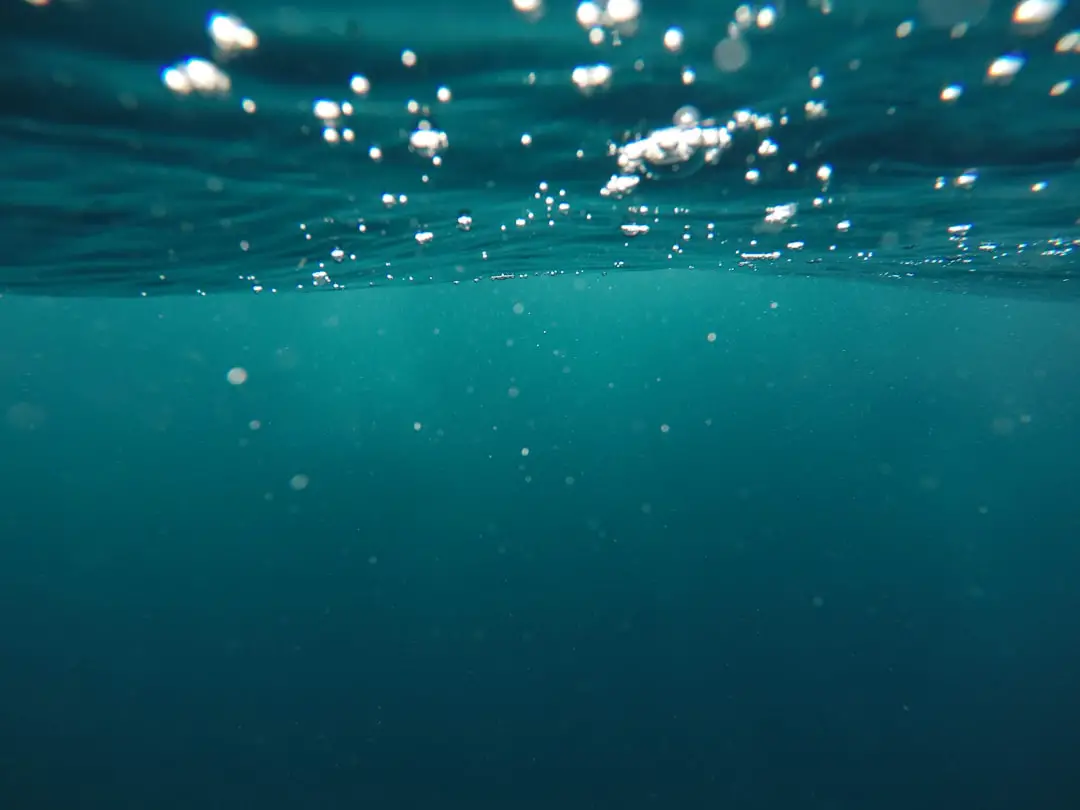
What is the difference between a foil board and a regular surfboard?
Foil boards differ fundamentally from regular surfboards because they have a hydrofoil mounted underneath—a wing-like structure that lifts the board above the water’s surface. This reduces drag dramatically, allowing for higher speeds and smoother rides over choppy or small waves. Regular surfboards rely solely on buoyancy and wave power, while foil boards generate lift hydrodynamically, enabling riders to “fly” above the water. This means foil boards can be used in conditions where traditional surfing isn’t possible, like flat lakes or small swell.
Read more about “Hydrofoil Surfboard Mastery: Top 10 Boards & Tips for 2025 🚀”
How do you balance on a hydrofoil board for beginners?
Balancing on a hydrofoil board is a bit like learning to ride a bike—tricky at first but rewarding once you get it. Beginners should:
- Start in calm, shallow water to get comfortable.
- Keep their weight centered and low, with knees slightly bent.
- Use foot straps or pads to secure feet and gain control.
- Practice small shifts in weight forward/back and side to side to feel how the foil responds.
- Expect initial wobbling and falls—wearing a helmet and impact vest is crucial.
With time, your body will intuitively adjust to the three-dimensional balance required to keep the foil stable and glide smoothly.
Read more about “7 Basic Requirements to Get Started with Hydrofoil Boarding in 2025 🌊”
What are the key components of a hydrofoil board and how do they function?
The hydrofoil system consists of:
- Board: The platform you stand on, designed for stability and control.
- Mast: Connects the board to the foil, determining ride height.
- Fuselage: The backbone connecting the mast to the wings.
- Front Wing: Generates the lift needed to raise the board above water.
- Rear Stabilizer Wing: Provides balance and controls pitch and roll.
Each component works in harmony to create lift, reduce drag, and provide maneuverability. Adjusting sizes and angles of these parts tailors the ride to your skill and conditions.
Can you learn to hydrofoil board if you have no prior surfing or wakeboarding experience?
✅ Absolutely! While prior experience can help, hydrofoiling is accessible to newcomers with the right approach. Many beginners start on larger, more stable foil boards and practice in calm water. Learning to hydrofoil requires patience and balance but is less dependent on wave knowledge than traditional surfing. Taking lessons, renting equipment, and starting with beginner-friendly gear can accelerate your progress. Safety gear and a gradual learning curve are key to success.
How do electric foil boards (e-foils) change the hydrofoiling experience?
Electric foil boards add a motorized propulsion system, allowing riders to fly without wind or waves. This opens up hydrofoiling to a wider audience and environments. E-foils provide consistent speed and can be easier for beginners since you don’t need to generate momentum yourself. However, they require battery management and are generally pricier. They’re perfect for those seeking effortless, year-round foiling fun.
Reference Links: The Science Behind Our Stokedness
- Wikipedia: Foilboard
- Despatch: How Do Hydrofoil Surfboards Work?
- Red Bull: Beginner’s Guide to Hydrofoil Surfing: How to Start
- Starboard: Official Website
- Naish: Official Website
- F-One: Official Website
- Slingshot: Official Website
- Fanatic: Official Website
- Hydrofoiling™ Categories:
Ready to take flight? Your hydrofoil adventure awaits! 🌊🚀

